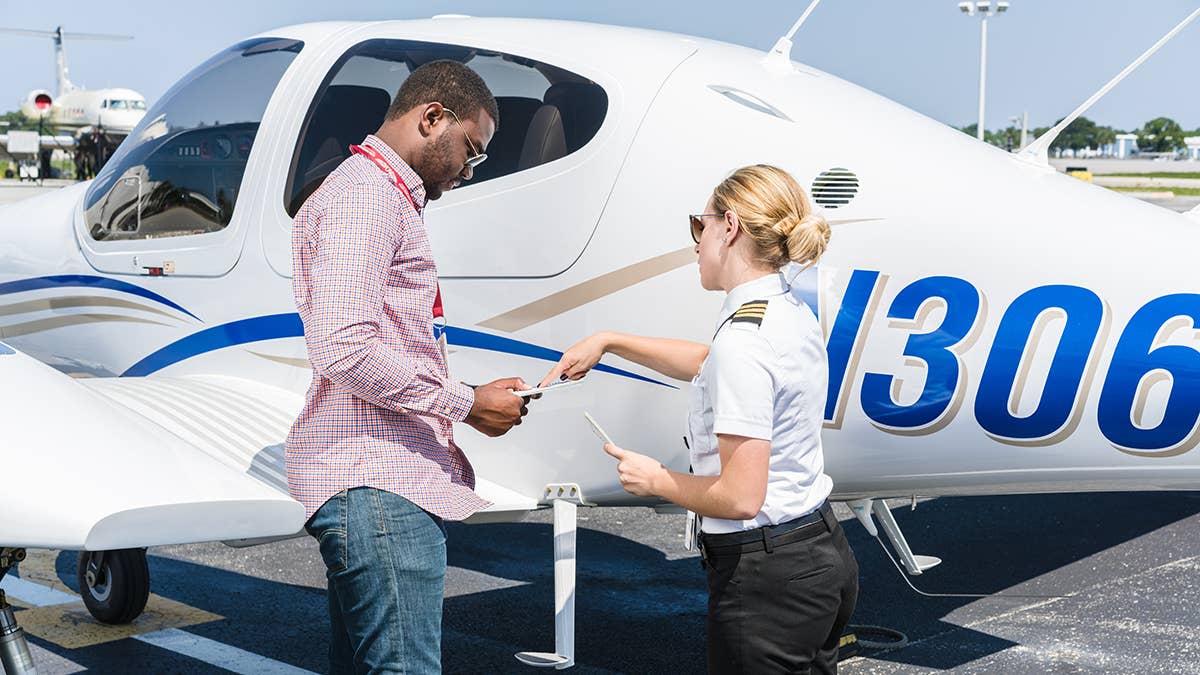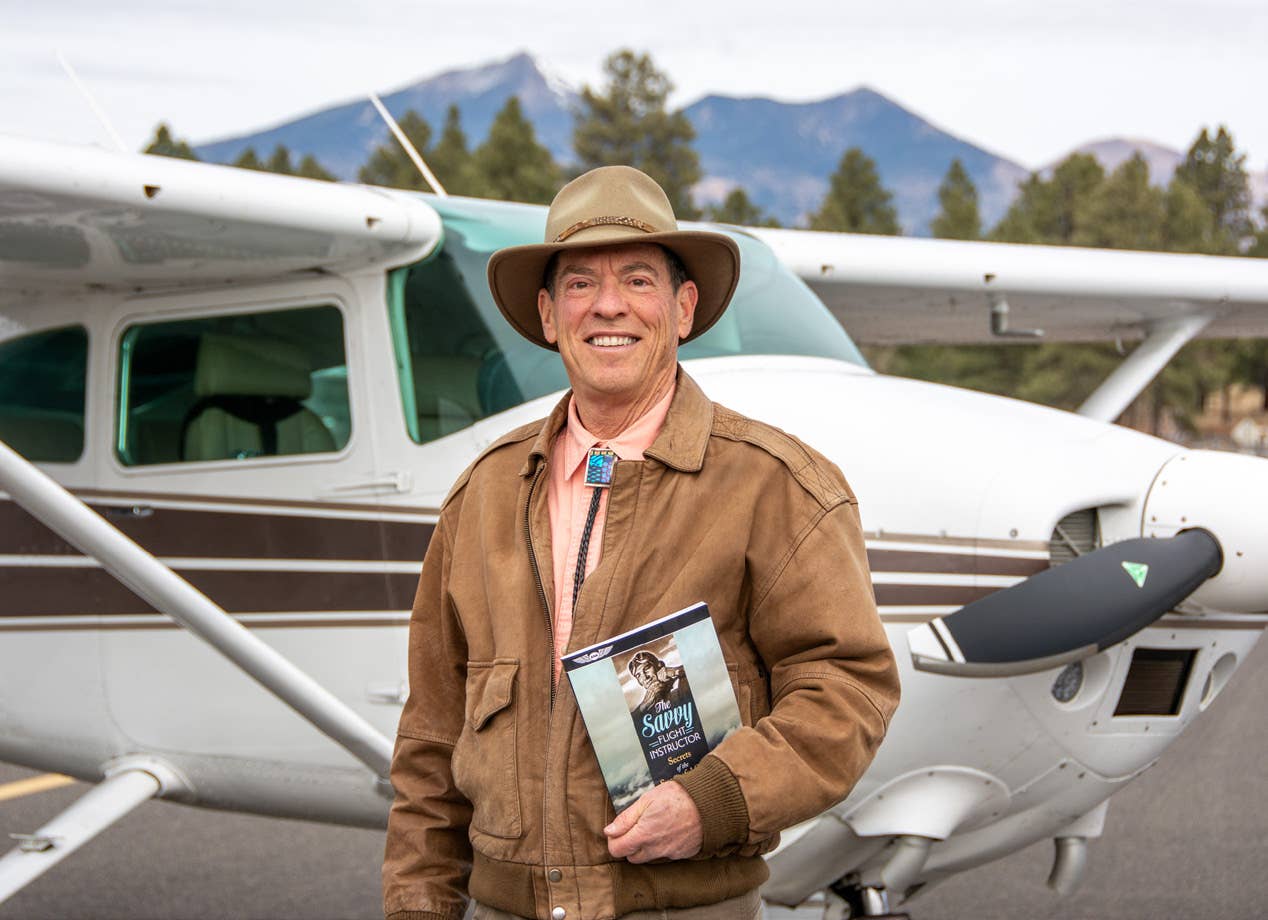7 Ways to Control Your Check Ride Destiny
If it feels like the many requirements for your check ride aren’t lining up, you are not alone.

Learners who get very attached to their instructors might be willing to wait for that CFI to become more available. In doing so, however, they risk putting their training on hold. [Daryl LaBello/Embry-Riddle Aeronautical University]
Are you familiar with the Swiss cheese model for accidents? It teaches us that when all the risk factors—the holes—line up, accidents happen.
The model can also be applied to check rides, except instead of the holes being risks, they are requirements for the check ride to happen. Sometimes it can feel like the holes will never line up, and you may feel like you've wasted hundreds of hours and thousands of dollars. If you have ever felt this way, you are not alone.
Getting everything in place to make a check ride happen is a lot like herding kittens (I have experience with both—I know of what I speak). Sometimes, it seems like the aviation kittens are on the other side of several shots of espresso with a Red Bull chaser.
Think of all the things that have to line up for a check ride to happen: The applicant has to meet the requirements both in tasks and experience. The logbook must be totaled up and tabbed. The aircraft maintenance logbooks must be available, and the applicant must know how to find the appropriate information to prove the aircraft is airworthy. The applicant must be proficient and meet the FAA airman certification standards. The designated pilot examiner must be available. The applicant's Integrated Airman Certification and Rating Application, or IACRA, must be filed and the application for a check ride sent to the designated pilot examiner (DPE) several days in advance. The weather must cooperate. The applicant must have the examiner’s fee (north of $700 for most rides) in cash. You may have one, two, or three of those—but the rest aren't quite there yet.
It can get discouraging, and sometimes, we can get in our own way. FLYING has some suggestions to help you overcome those often self-imposed obstacles.
1. Don't Wait on a Particular CFI
Learners can get very attached to their instructors, so much so that they are willing to wait for that CFI to become more available. As a result, they put their training on hold or stretch it out, making it difficult to learn and retain the skills and knowledge.
I saw this with a private pilot candidate whose CFI was flying part time for a charter operation and teaching part time at the flight school. The pre-solo learner's training had been two or three flights a week, then it dropped to once a week, weather permitting. Proficiency was quickly lost. Eventually the owner of the flight school persuaded the learner to fly with a career instructor.
“If you find a career CFI, metaphorically speaking, wrap around that CFI like a spider monkey going up a palm tree. Hang on to that person and get the job done.”
2. Accept the CFI May Move On
It is a fact that most people become flight instructors to build their hours, so it shouldn't come as a surprise when the CFI leaves. It is the nature of the industry.
Make it less painful by insisting your CFI uses a syllabus—and that you have a copy of it—and that they sign your logbook at the end of each lesson. If the CFI tells you “no one here uses a syllabus” or “I'll sign it next time,” find a more professional instructor. If you find a career CFI, metaphorically speaking, wrap around that CFI like a spider monkey going up a palm tree. Hang on to that person and get the job done.
3. Don't Wait on a Particular Airplane
Every learner has a favorite airplane in the rental fleet. While it is true most flight schools put check rides at a higher priority than regular lessons, you don't want to wait for your favorite airplane to become available—or, worse yet, go out on maintenance. That “minor thing” found during its 100-hour inspection can easily turn into a “several weeks in the hangar waiting on a part” saga.
Get experience in all the appropriate airplanes in the fleet and arrange to get at least an hour or so in the one you will be taking your check ride in before the big day.
4. Be Ready to Travel
It may come down to going out of the area to finish your check ride. There are programs around the country that offer this service, and they often have an examiner on staff. You need to come in with the knowledge test complete and enough training and experience to pass the oral exam and the check ride. The CFIs at the “finish-up” program will likely require you to fly at least three hours with them to ensure you are ready for the check ride before they give you the endorsement. Once you have that, you have 60 days to take the check ride. If the weather turns sour and you need to return home, you can take the check ride at home. You don't have to return to the finish-up program.
I stress this because I know of a private applicant who traveled out of state to finish, ran into a mechanical challenge, and had to return home. His out-of-state-CFI told him he would have to return to take the check ride because the CFI’s signature was not valid out of state. This is incorrect. The CFI certificate is a federal authorization that has no such limitation.
If you have to return home before completing the check ride, understand that once you have the endorsement, you can call a DPE and set up your own check ride. Most of them are good about walking you through the process, have a website with information, or will email you instructions.
You will want to keep flying to stay sharp, so check with all the schools within a reasonable radius of your home airport—don't forget to ask about independent instructors who have their own aircraft as well. You might even find a friend who holds a CFI certificate and will fly with you for the price of fuel. Have that CFI friend go over expectations for the check ride. They may even recommend a DPE.
5. Make Sure Both You and the Airplane Are Ready
Have your CFI go over the aircraft maintenance logs, registration, and weight and balance to make sure they are in order and the aircraft is airworthy. Have them go through your logbook as well to confirm you meet the qualifications for the check ride.
Many DPEs charge an additional fee if the check ride has to be discontinued or cannot begin because either the airplane or the applicant is not ready. And some of them can be rather nasty about it and vow not to return to the flight school.
6. Be Wary of Those Who Take Advantage
It is not uncommon for applicants to finish their training, get the endorsement, then have the airplane incur a maintenance issue. Instead of waiting for it to be fixed (it can take months), find another flight school that will allow you to use one of its airplanes for the check ride.
Reputable schools will basically perform an aircraft checkout, which usually involves an open book test on airport and flight school procedures, weather, FARs, and aircraft systems, followed by a flight of about an hour with a qualified CFI. Your previous CFI already gave you the check ride endorsement, so you don't need that from the new flight school CFI.
If the owner of the school or chief CFI says you can't use their airplane for a check ride unless one of their CFIs signs you off because of "regulations" or "insurance reasons," it's likely an effort to pad the bill.
7. Be Prepared for Frustration
Learning plateaus and pre-check ride frustration are part of the process, and like the challenges that often accompany puberty, we all go through them. Although it can be tempting to quit, sometimes you just have to make like Odysseus and tie yourself to the mast. Just get through it.
Remember, it is most often the things we don’t do in life, such as finishing a certificate or rating, that haunt us the most. Don't let giving up on your pilot certificate become a regret.

Sign-up for newsletters & special offers!
Get the latest FLYING stories & special offers delivered directly to your inbox






